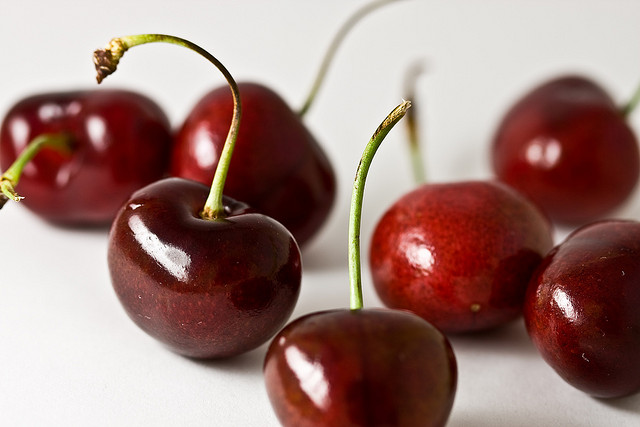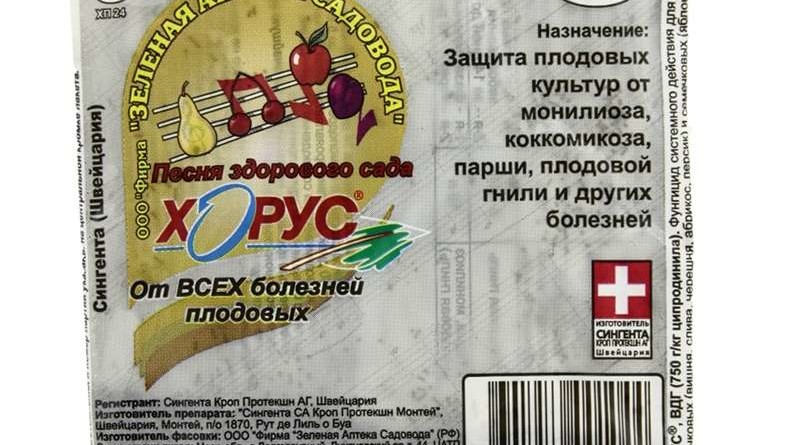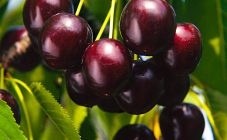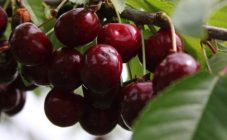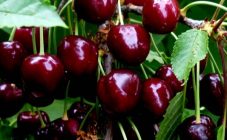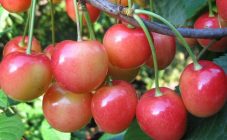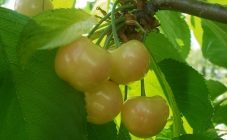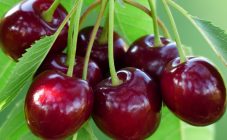Content:
More than 200 species of sweet cherries grow in the gardens of the Crimean peninsula. The most popular of all are the Mayskaya early ripening, Napaleon, Kara Keresa, Francis, Drogan varieties.
When the Crimean cherry ripens
- Variety Mayskaya early ripening: its fruits are red, large, juicy. They begin to ripen at the end of May, continuing to ripen until the beginning of June, the first to appear on the markets of Simferopol. Berries are not suitable for transport and must be eaten locally.
- Cara Kerez variety (Crimean Tatar species): was bred in the Crimea. Fruits are dark red, medium. Ripening period: June - early July. Harvested for three weeks. First in Koktebel, Alushta, Sudak, then Bakhchisarai, Simferopol. Later - Dzhankoy, Krasnogvardeisky, Nizhnegorsky. Suitable for making compote, jam, and drying. It tolerates transportation well.
- Variety Francis: Western European look. Its fruits are light yellow, covered with red dots, large, juicy. The weight of one berry is 10-17 grams. Ripens late, end of June - first half of July. Differs in good transportability.
- Drogan's variety: it is brought from Western Europe. Its fruits are yellow, large and round. Ripen at the end of June. The mass of each berry is 6-8 gr. Cannot tolerate transportation. Can be affected by fruit rot.
- Variety Napoleon (Black Prince) is considered an undeservedly forgotten old type of sweet cherry. It was bred by Western European breeders. On the territory of the former USSR, it was grown mainly in the southern regions. The berries are heart-shaped, juicy, ruby-colored. Ripen in mid - end June, first decade of July. Suitable for long haul
Description of the species
Trees begin to bear fruit at 4 - 5 years of age. The trees are characterized by intensive growth. Adult specimens reach 6 meters in height. The crowns are large in diameter, spreading, spherical. The foliage is dense. Leaves are light green, oval, evenly elongated on both sides. Crops bear fruit abundantly.
Flowering begins in late March - early April (it depends on the region, climate). Each inflorescence consists of 2 - 3 flowers. They are collected mainly on the first 5 buds of young shoots, as well as bouquet branches.
The berries are large (6 - 10 gr.), Dark red or yellow, sweet-sour taste. Fruit shapes are heart-shaped, round, oval. The pulp is juicy, red, lemon, yellow. Fruits of different types ripen in late May, mid - late June, early July.
Landing
If you intend to break up a whole cherry orchard, it is better to arrange paired rows. Trees prefer warm sunny places, do not tolerate darkening, high humidity, draft, turf overgrown soil, weeds.
Before planting seedlings, the site is cleared of grass, dug up the ground, and organic matter is introduced. A deep planting hole is prepared. They put mineral compositions, humus in it. The culture will fully grow and develop.
During autumn planting, the root collar must be earthed. With the arrival of spring, it is opened after the frost has passed.
The distance between the trees should be 3-4 meters, as they grow quite large. Tie the tree trunk to the pegs. There must be at least three of them. After planting work, the earth is tamped tightly, spilled abundantly.
In the north, in the Central region, Moscow, it is preferable to plant the Crimean cherry in the spring.
Care
Sweet cherries in Crimea, as in all southern regions, require frequent watering. Scarce soils also need humus fertilization. If the soil is clay or sandy, then the plants are fertilized with manure.
It is necessary to water the trees:
- in May, after the cherry blossoms are completed, so that the plant is saturated with moisture before the beginning of fruiting;
- during the period when the berries begin to ripen, so that they are beautiful, juicy;
- during drought (abundant watering to a depth of 40 cm);
- in the fall, before the onset of frost.
It is necessary to regularly loosen the soil to a depth of no more than 7 cm. It is better to do this after each watering of the plant. In the near-stem circle, you can sow green manure. They will displace weeds, additionally feed the cherries.
The trees are fed throughout the season. Peat, humus, diluted aqueous infusion of chicken manure or manure are used.
Pruning is carried out annually. Annual shoots are shortened by a fifth of the trunk. Growing shoots are cut inward, forming a beautiful crown. Sick, old, damaged, dry branches are also removed. After the work, the sections are poured with garden pitch.
Diseases, pests
Cherries can be attacked by a cherry fly. She is able to destroy 70% of the crop. Control measures:
- digging up the soil;
- irrigate the tree with soapy water;
- during the season of flowering, all kinds of traps, vessels filled with sweet liquid, sticky tapes are fixed on the branches.
Sometimes crops are harmed by cherry weevils, aphids, caterpillars. In this case, 2 weeks after the flowering period, it is treated with Aktelik, Aktar, Engno.
Occasionally, plants are affected by coccomycosis, rot, and other fungal diseases. In the fight against them, the drug Horus is used.
Prevention
In the spring, they carry out sanitary pruning of branches, burn weeds, fallen leaves, dig up the near-trunk zone, spray trees with copper sulfate or Bordeaux mixture, whitewash the trunks with lime. The same procedures must be carried out in October - November.
All varieties of cherries, of course, deserve the attention of gardeners. Despite some requirements for growing conditions, the crop as a whole has proven itself very well.
